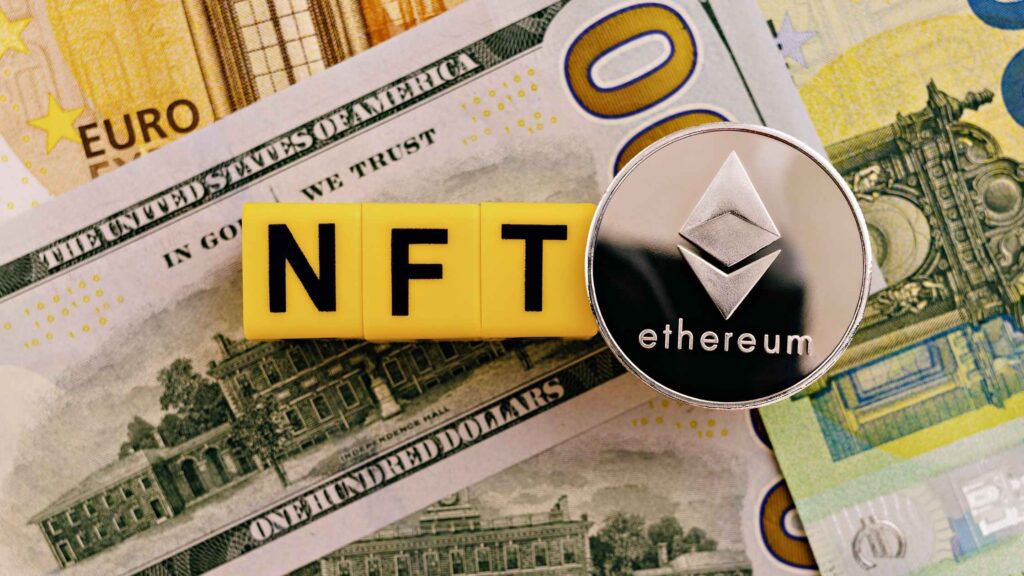How do you choose an ETF?

ETFs – index following mutual funds – are popular investment products. And that’s not surprising: They offer the opportunity to invest widely at low cost. For example, you can invest in a basket of all the companies in the AEX, or the 500 largest companies in the US. So ETF investing can be a very nice way to build wealth. We previously wrote articles about what an ETF is. But ETF, WTF? So many choices, how do you choose an ETF?
Oh yeah before we get started: investing involves risk, even if you invest in ETFs. Invest only with money you can spare. And: ALWAYS do your own research.
How do you choose an ETF? A roadmap
You can follow an ETF roadmap, for example:
- Choose your region. Do you want to follow the global economy or rather believe in emerging markets?
- Choose a basket you want to invest in. Do you want only stocks, or also bonds? So the type of asset class you choose.
- Choose your sector. Do you want to invest in a particular sector, such as e-sports, technology or sustainable food?
- Choose whether you want a durable element.
- Choose whether you want protectors or extras. Such as protectors against dividend leakage, or just an ETF that pays dividends.
But even when following this roadmap, many choices remain, and it may leave you feeling dizzy. How do you choose?
If you follow these steps, you may end up with a list of – let’s say – 10 ETFs. Next, how will you choose among these ETFs?
First things first
First, it is important to have your investment plan clear. The Starting to Invest course will give you tools for a personal plan. Components of an investment plan always include answers to the questions: what is your investment goal, what is your investment horizon, how much money do you have to invest and what is the risk you are willing to take?
There are those who want to become FIRE (financially independent & retire early), want to be especially low risk, incur no expenses and prefer convenience over hassle. We see that they often invest in 1 ETF, the popular Vanguard All World.
VWRL: Vanguard FTSE All-World (ISIN: IE00B3RBWM25). This ETF tracks the performance of the FTSE All-World Index. This is an index (basket) of stocks of (medium) sized international companies. Annual fund fees: 0.22% per year. Average return over the past 10 years: 11.25%. This ETF also has dividend yields of around 2% per year.
Some people try to make returns faster (and/or believe very much in a particular sector) and choose, for example, an ETF that they believe has a lot of growth potential. For example, people who believe in e-sports development. Then you have, for example, VanEck’s ETF, the VanEck Vectors VideoGaming&eSports UCITS ETF USD A.
Proposition
A general maxim is that even when investing in ETFs, you need to make sure you have a good spread. Spreading out your investments is important because it minimizes risk.
A maxim might be: Invest in at least three to five different ETFs or funds so that you can spread investments across different markets, products and sectors.
5 ETFs
Okay, suppose you want to invest in 3 to 5 ETFs. Then we go back to the roadmap for a moment. We assume, for the sake of convenience, that you want to create financial independence with investing. So you want to build wealth where you can eventually live off your returns. So you want to be low risk, and absolutely as low cost as possible. Because costs take a bite out of your returns. How to keep costs down? Choose an ETF with low fund fees, make sure you can trade for free (at BUX Zero you can invest in ETFs without commission, at DEGIRO you can only make a free trade once a month in the core selection). In addition, make sure you choose an ETF in your currency (otherwise you will likely pay currency fees).
What do you choose for financial independence?
If you want to invest for financial independence, you want to build wealth to eventually generate passive income. This requires a different investment approach than if you want to double your deposit in 2 years. One option could then be the Vanguard All World as mentioned earlier in this article, or the IWDA: iShares Core MSCI World ETF (ISIN IE00B4L5Y983).
This ETF is very similar to the VWRL ETF. Both are ETFs with a global spread. The difference is in the spread within the basket. There are also fewer stocks in this ETF from iShares. The cost is just a little lower, though. Fund fees per year are 0.20%. The average return over the past 10 years is 12.19%. This ETF pays no return.
Tip: Now don’t because we mention this ETF for illustration purposes go buy these ETFs like a crazy lady. Above all, do good research and look at what your financial goals are and what investment fits them. It may also be that investing doesn’t fit your financial picture (yet), that’s okay too. Never be maddened or feel FOMO!
Bonds
In addition, you can also choose a bond ETF. Bonds have historically been slightly less risky than stocks. Bonds are loans you make to a state or company, in exchange for interest. After the term, you get your loan back. With a stock, you become a co-owner of a company. You benefit when the company grows, but you share the pain when the company goes down the drain. Read more about bonds here.
To minimize risk, you can choose a bond ETF with bonds from established countries, such as the Netherlands and Germany. Less risky because the chances of these states going bankrupt and not repaying their loans are low.
For example:
Xtrackers II Global Government Bond UCITS ETF 5C. This tracker tracks global government bonds.
But what is also possible:
Xtrackers II ESG EUR Corporate Bond UCITS ETF 1C, it tracks bonds of large European companies.
Dividend ETF
Additionally, what may be a consideration if passive income is your focus is investing in an ETF that tracks dividend stocks so you benefit from dividend payments.
For example, consider…
SPDR S&P Gbl Div Aristocrats UCITS ETF (IE00B9CQXS71). An ETF that tracks dividend aristocrats, which are companies that have been paying steady dividends every year for years. The disadvantage of this ETF is that the fund fees are higher, at 0.45%. This is not surprising, because this is not an ETF that copies an existing index easy peasy 1 to 1 (as the iShares MSCI does, it tracks an existing index, the MSCI), but this ETF has to be put together manually. That makes the cost higher.
For example, another dividend ETF is Vanguard FTSE All-World High Dividend Yield UCITS ETF USD Distributing (EUR). Ticker name: VHYL. Pff what names huh? Either way, this ETF pays dividends, quarterly. Fund fees are lower than the above, at 0.29%
Pst: if you’re getting all dizzy from all those terms, within the Beginning to Invest course we’ll explain exactly what these terms stand for.
Where can you buy these ETFs?
ETFs you can buy from a broker. An example is BUX Zero or DEGIRO. Pay particular attention to fees when choosing a broker. And on safety (do they have an AFM license?). If you don’t want to pick your own ETFs, you can also invest index funds at Brand New Day, for example. Set up a direct debit each month, specify your risk profile and they do the rest. Read our review of the parties we just mentioned here.
How do you choose an ETF? You can do that yourself!
We do not recommend any particular ETF, but we do recommend the following: do your own research well. Go create your investment plan, and really sit down to choose the right investment products. Too often we see people impulsively buying something. And it’s also so easy with all the apps these days! In a split second, you made a transaction. But it’s about your money, your future. It is worth spending a few hours/days fanning yourself, gaining knowledge and choosing the right one.
Are you still at the very beginning of your journey to financial independence? Become an Elfin member and get all the help and knowledge you need to get started on your own, including investing.





